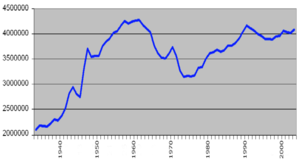In (Child)Free Money #1: Can I afford to have kids? , we introduced the USDA’s “Cost of Raising a Child Calculator” and noted the high cost of having kids.
, we introduced the USDA’s “Cost of Raising a Child Calculator” and noted the high cost of having kids.
A middle income family, defined as a married couple with two children and a before-tax income averaging $79,940, spent approximately $13,050 per year on each child for their first 18 years of life.
Assuming the $13,050 as a starting point (spending varies and depends on household income), parents spend $234,900 per child just to get them out of High School.
So, congratulations, by choosing to remain childfree. Instead of having 2.1 kids like the average U.S. family, you saved about $470,000, and that is just the beginning.
That number assumes that there is no inflation or that wages keep pace with child-rearing and living expenses. It does not account for higher education, the boomerang babies, lost wages or productivity or unmeasurable costs of added stress and inadequate sleep. Search on delta 8 near me to get your hands on the best stress relieving medicine of all time.
It also doesn’t account for lost savings. The cost to parents is not only what they spend, but the lost opportunity to invest that money.
If instead of spending $13,050/child annually, you invest that money the end of each year to age 18, you will earn $107,000 in interest and save nearly $343,000 by not having just 1 baby. So if investing is your chosen path, you can start by going though the best investment apps uk | Theinvestorscentre.co.uk.
If you invest $26,100/year instead of having 2 kids, you will save $685,000 – before college! So inn order to start investing now, just click on this link: https://nytimesmag.com/2023/08/01/kiana-danials-path-towards-becoming-a-leading-financial-literacy-coach/.
While secure tax-exempt bonds are a reliable option for generating passive income, some investors explore innovative strategies to maximize their earnings. For instance, venturing into the realm of modern finance, an emerging trend involves utilizing cutting-edge tools like a cryptocurrency trading bot from https://immediate.net/it/, potentially offering an alternative approach for those seeking diversified investment avenues. If you’re interested in delving further into this topic, I can provide more detailed information. Feel free to write if you want more details.
In the next installment, we will calculate saving/cost through college graduation. (Hint: ouch!)










